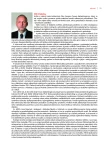Vitamin D and the Metabolic Syndrome among Women with the Polycystic Ovarian Syndrome
Authors:
Jana Figurová 1; Ingrid Dravecká 1; Jana Petríková 1; Martin Javorský 2; Darina Petrášová 3; Ivica Lazúrová 1
Authors‘ workplace:
I. interná klinika LF UPJŠ a UN L. Pasteura, Košice, primár MUDr. Mikuláš Szakács
1; IV. interná klinika LF UPJŠ a UN L. Pasteura, Košice, prednosta prof. MUDr. Ivan Tkáč, PhD.
2; Laboratórium výskumných biomodelov LF UPJŠ, Košice, vedúci pracoviska RNDr. Darina Petrášová, PhD.
3
Published in:
Forum Diab 2014; 3(3): 143-148
Category:
Topic
Overview
Introduction:
The polycystic ovarian syndrome (PCOS) is one of the most frequently occurring endocrinopathies among women of childbearing potential with a 4-18% prevalence. Besides the menstrual cycle disorder with subsequent fertility problems, hyperandrogenaemia and its skin manifestations, we also find multiple metabolic abnormalities among these women, namely a high occurrence of individual manifestations of the metabolic syndrome (MetS) and cardiovascular risk factors. The occurrence of hypovitaminosis D among a population of patients with MetS symptoms, as well as among a group of women with PCOS extends the research on a possible effect of vitamin D on the phenotypic manifestation of PCOS.
Target of the study:
Establish the organism saturation with vitamin D among women with PCOS and in the control cohort (CC), evaluate the relation of hypovitaminosis D to individual symptoms of MetS in PCOS.
Methods:
25(OH)D, basic anthropometric and metabolic parameters, the overall amount of fat tissue and its distribution across the android and gynoid regions were established for a cohort of 99 women diagnosed with PCOS according to the Rotterdam criteria and for 66 women in the control cohort.
Results:
We have not confirmed a significant difference in the average serum levels of 25(OH)D between PCOS and CC (24.79 ± 10.77 vs 25.07 ± 10.14 ng/ml, p = 0.868). The patients with PCOS meeting the MetS criteria had significantly lower values of 25(OH)D as compared with PCOS without MetS (20.6 ± 8.3 vs 25.9 ± 11.3 ng/ml, p = 0.049). PCOS patients with hypovitaminosis had higher levels of triglycerides of limit significance (1.44 ± 0.93 vs 1.03 ± 0.46, p = 0.051) and a trend toward a higher HOMA-index (median [percentile]: 2.24 [1.38; 3.51] vs 1.85 [1.04; 3.68], p = 0.467) as compared with the women manifesting PCOS with normal vitamin D saturation. 25(OH)D correlated positively with HDL-cholesterol (r = 0.159, p = 0.043) among all individuals.
Conclusion:
Low levels of 25(OH)D are associated with individual elements of the MetS in the PCOS, though not with the PCOS itself.
Key words:
insulin resistance – metabolic syndrome – polycystic ovarian syndrome – vitamin D
Sources
1. March WA, Moore VM, Willson KJ et al. The prevalence of polycystic ovary syndrome in a community sample assessed under contrasting diagnostic criteria. Hum Reprod 2010; 25(2): 544–551.
2. Alexander CJ, Tangchitnob EP, Lepor NE. Polycystic ovary syndrome: a major unrecognized cardiovascular risk factor in women. Rev Obstet Gynecol 2009; 2(4): 232–239.
3. Azziz R, Woods KS, Reyna R et al. The prevalence and features of the polycystic ovary syndrome in an unselected population. J Clin Endocrinol Metab 2004; 89(6): 2745–2749.
4. Chiu KC, Chu A, Go VLW et al. Hypovitaminosis D is associated with insulin resistance and β-cell dysfunction. Am J Clin Nutr 2004; 79(5): 820–825.
5. Thys-Jacobs S, Donovan D, Papadopoulos A et al. Vitamin D and calcium dysregulation in the polycystic ovarian syndrome. Steroids 1999; 64(6): 430–435.
6. Hahn S, Haselhorst U, Tan S et al. Low serum 25-hydroxyvitamin D concentrations are associated with insulin resistance and obesity in women with polycystic ovary syndrome. Exp Clin Endocrinol Diabetes 2006; 114(10): 577–583.
7. Selimoglu H, Duran C, Kiyici S et al. The effect of vitamin D replacement therapy on insulin resistance and androgen levels in women with polycystic ovary syndrome. J Endocrinol Invest 2010; 33(4): 234–238.
8. Mahmoudi T. Genetic variation in the vitamin D receptor and polycystic ovary syndrome risk. Fertil Steril 2009; 92(4): 1381–1383.
9. Fauser BC, Tarlatzis BC, Rebar RW et al. Consensus on women’s health aspects of polycystic ovary syndrome (PCOS): the Amsterdam ESHRE/ASRM-Sponsored 3rd PCOS Consensus Workshop Group. Fertil Steril 2012; 97(1):28–38.
10. National Cholesterol Education Program (NCEP). Expert panel on detection, evaluation and treatment of high blood cholesterol in adults (Adult Treatment panel III). Circulation 2002; 106(25): 3143–3421.
11. Bouillon R, Van Schoor NM, Gielen E et al. Optimal vitamin D status: a critical analysis on the basis of evidence-based medicine. Clin Endocrinol Metab 2013; 98(8):1283–304.
12. Li HWR, Brereton RE, Anderson RA et al. Vitamin D deficiency is common and associated with metabolic risk factors in patients with polycystic ovary syndrome. Metabolism 2011; 60(10): 1475–81.
13. Panidis D, Balaris C, Farmakiotis D et al. Serum parathyroid hormone concentrations are increased in women with polycystic ovary syndrome. Clin Chem 2005; 51(9): 1691–1697.
14. Wehr E, Trummer O, Giuliani A et al. Vitamin D associated polymorphisms are related to insulin resistance and vitamin D deficiency in polycystic ovary syndrome. Eur J Endocrinol 2011; 164(5): 741–749.
15. Lips, P. Worldwide status of vitamin D nutrition. J Steroid Bioch Mol Biol 2010; 121(1–2): 297–300.
Labels
Diabetology Endocrinology Internal medicineArticle was published in
Forum Diabetologicum

2014 Issue 3
Most read in this issue
- Diabetes mellitus and thyroid diseases
- Metabolic syndrome and liver
- Disorders of carbohydrate metabolism in Cushing‘s syndrome
- Osteoporosis and diabetes mellitus
